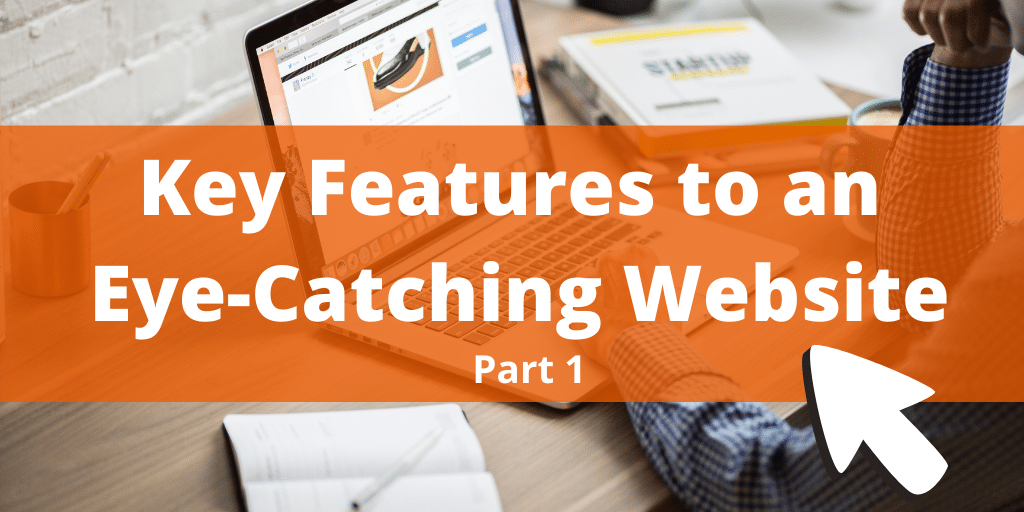The Power of Visual Design
In today’s ever-changing digital landscape, having an eye-catching website is critical for attracting and retaining visitors. A visually appealing website not only attracts visitors’ attention, but also engages them, stimulates investigation, and communicates the spirit of a company. So, what are the essential qualities that make a website truly appealing? Let’s delve into the world of web design and learn the keys to creating enthralling online experiences.

Color Palette and Typography
The careful selection of colours and font is one of the most important parts of an eye-catching website. Colours elicit emotions and can have a significant impact on the overall impression of a website. Colours that are vibrant and striking can give a sense of energy and excitement, whilst softer and muted tones portray a more refined and calm ambience.
Furthermore, typography is important in improving the visual attractiveness of a website. Fonts should be legible, relevant, and consistent with the brand’s identity. A mix of font styles, such as a forceful headline font and a clean, simple body font, can provide depth and visual appeal to the design.
Layout and Composition
A website’s layout and composition are critical in attracting users’ attention and guiding their path around the site. A well-structured layout with balanced proportions and clear hierarchies can improve the accessibility and engagement of the content.

Effective use of white space is also required. It aids in the creation of breathing space between pieces, allowing crucial information to shine out and decreasing visual clutter. Image, text, and other visual elements are strategically placed to create a harmonious and visually pleasing composition.
Images and Graphics
Images and images have the ability to instantly and emotionally convey messages. Including high-quality, relevant, and visually appealing photos can instantly attract visitors’ attention. Whether it’s a magnificent hero image, an interesting photo gallery, or fascinating graphics, visual elements should complement the text and improve the overall aesthetic appeal of the website. For a web designer see here.
Using images such as icons and infographics can also help to create an appealing website. They have the ability to convey complicated information in a simple and aesthetically appealing manner, making the content more digestible and entertaining for consumers.

Animation and Interactive Elements
Including animations and interactive components to a website can greatly improve its aesthetic appeal. Smooth transitions and hover effects, for example, can lend a sense of elegance and interactivity. Sliders, carousels, and scroll-triggered animations, for example, can give an immersive and engaging user experience, making the website genuinely unique.
However, striking a balance between looks and usefulness is critical. While animations and interactive components can improve the aesthetic attractiveness of a website, they should not slow it down or distract users from the core information.
Consistent Branding
A unified and consistent branding strategy is required for a visually appealing website. To build a strong brand identity, use a similar colour palette, typeface, and artwork throughout the site. The design aspects of the website should be consistent with the brand’s values, mission, and target audience.
Furthermore, strategically placing the business’s emblem, motto, and unique selling propositions helps strengthen brand identification and provide a memorable user experience. Brand consistency not only improves visual attractiveness but also fosters confidence and credibility among visitors.
Responsive and User-Friendly Design
A website must be responsive and optimised for various devices and screen sizes in today’s mobile-driven environment. A responsive design guarantees that the layout, pictures, and content of the website adapt fluidly to multiple screen sizes, offering a consistent and visually appealing experience across devices.
Furthermore, for an appealing website, user-friendly navigation is essential. Users may easily navigate the website and get the information they need thanks to intuitive menus and obvious navigation features. Users can scan and digest material more rapidly when it is organised with headings and subheadings.
Conclusion: Captivating the Digital Audience
In a world when attention spans are short and competition for online engagement is high, organisations and people alike must create an eye-catching website. A website can engage its viewers and make a lasting impression by paying attention to visual design components such as colour palette, typography, layout, photos, graphics, animations, and branding. https://www.dynamicwebdesign.com.au/our-services/web-design-services/
Remember that a visually appealing website not only draws attention but also improves user experience, communicates brand identity, and fosters trust. It mixes aesthetics and functionality to produce a unified and visually appealing online presence.
As technology evolves and customer expectations change, it is critical to stay current on design trends and regularly optimise your website for a captivating experience. Analyse user comments and behaviour on a regular basis to identify areas for development and to keep your website fresh and engaging.
Finally, a truly eye-catching website goes beyond mere visual appeal. It seeks to establish a genuine relationship with users, leaving a pleasant impression and compelling them to return for more. So, harness the power of design, let your imagination run wild, and build an online experience that will fascinate and excite your audience.






